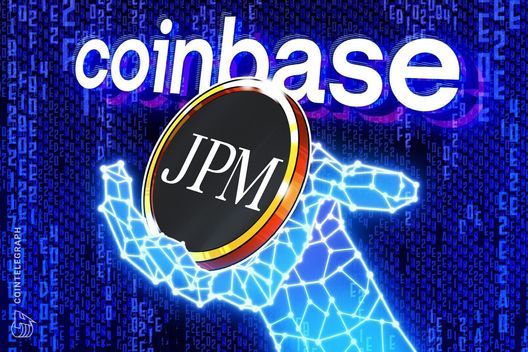

JPMorgan Chase is making a significant move into the digital asset space by piloting its JPMD deposit token on Coinbase's Base network. This initiative aims to provide institutional clients with a more scalable and potentially yield-bearing alternative to traditional stablecoins. The launch of JPMD on Base marks the first time a major commercial bank is putting a deposit-based product on a public blockchain.
In the coming days, JPMorgan will transfer a fixed amount of JPMD tokens from its digital wallet to Coinbase. This transfer will occur on Base, an Ethereum Layer 2 blockchain affiliated with Coinbase. The goal is to enable Coinbase's institutional clients to utilize JPMD for faster and more secure transactions. If the pilot program proves successful and receives regulatory approval, JPMorgan intends to expand the service to a broader range of users and support additional currencies.
Naveen Mallela, who leads JPMorgan's blockchain unit, Kinexys, has stated that deposit tokens offer a superior alternative to stablecoins from an institutional perspective. He argues that deposit tokens are more scalable because they are based on fractional reserve banking. Furthermore, deposit tokens like JPMD may have the potential to earn interest in the future and could be protected by deposit insurance, features not currently offered by stablecoins.
JPMD represents dollar deposits held at JPMorgan and differs from stablecoins that rely on segregated securities reserves. This distinction could provide regulatory advantages and clearer compliance pathways compared to traditional stablecoins, especially as the regulatory landscape for stablecoins evolves. The Senate is expected to vote on the GENIUS Act, which would introduce formal regulation for stablecoins in the U.S.
The JPMD token will be denominated in U.S. dollars, and the transaction process is designed to offer faster, more secure methods of transferring money. The token will be exclusively available to institutional clients, who can use it for transactions on the Base blockchain, benefiting from faster transaction speeds and near-instant settlement times. The blockchain technology behind JPMD enables real-time liquidity, making it a potentially valuable tool for commercial banking purposes.
This move represents an important step in integrating traditional banking services with blockchain technology. Base is designed to support a wide range of decentralized applications and digital assets, making it an ideal platform for JPMD. JPMorgan's decision to use Base suggests a strategic partnership aimed at leveraging the strengths of both institutions.
JPMorgan's interest in stablecoins and digital assets reflects a broader trend among financial institutions. Several large banks have expressed openness to adopting stablecoins for payments, recognizing their potential benefits, such as use in cross-border transactions and as a hedge against fiat currency inflation.
Just a day before announcing the JPMD pilot, JPMorgan also filed a new trademark for "JPMD," indicating broader plans for digital asset services, including trading, transferring, and making payments using digital currencies.
In 2019, JPMorgan introduced JPM Coin, a cryptocurrency designed for its wholesale payments business. This digital currency was developed to facilitate faster and more efficient transactions within the bank's internal systems. The launch of JPM Coin marked a pivotal moment for JPMorgan, demonstrating the bank's commitment to leveraging innovative technologies to enhance its financial services. The JPMD pilot on Base is a continuation of this commitment, extending the benefits of blockchain technology to a wider range of institutional clients and use cases.